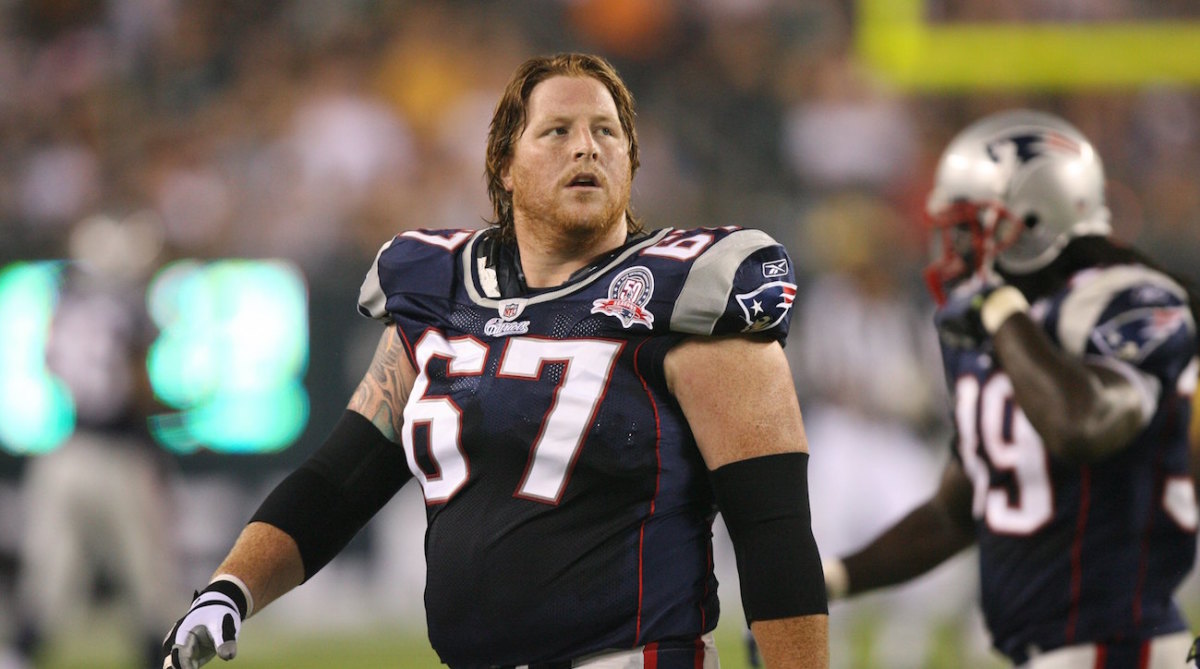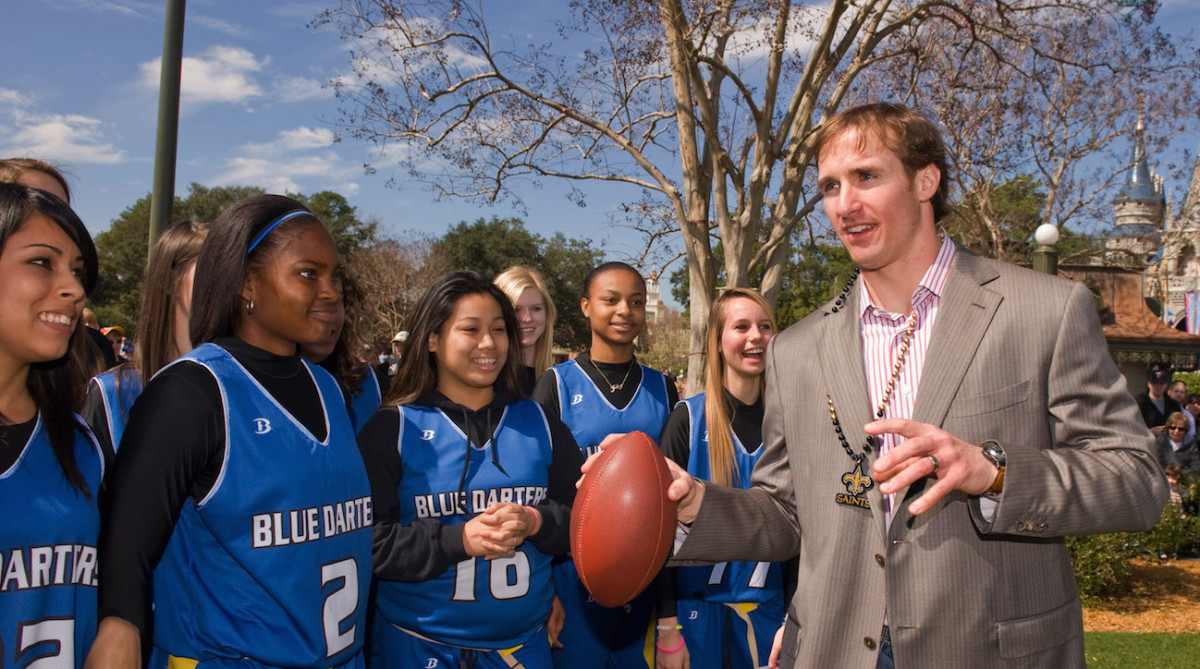The Rise of Flag Football

It is a crisp Friday evening in the center of my hometown, East Greenwich, Rhode Island. Three flag football games are taking place on the large field in front of James H. Eldredge Elementary School. Younger flag football teams start before the sun sets while the older teams play under the lights. Parents, relatives, and classmates cheer for the athletes from their seats on the bleachers, or from the grassy hill flanking the field. It’s now 8:00 p.m. and one of the more competitive age groups, the eleven-and twelve-year-olds, are playing.
“Ready, hut!”As the quarterback of the Vikings, I take my time in the pocket, waiting for the play to materialize. My favorite receiver, Patrick, breaks away from his man and he catches the pass, and breaks towards the end zone. “Go, Patrick, go!” yells our coach. He has enough momentum to beat the final defender to score the touchdown.
In my hometown and in cities and towns across the country, flag football has emerged as a fun and safe way for kids and adults to play football. The rules are very similar to “tackle football”, but the elimination of contact makes it safer. A 2016 study by USA Football found that participation had increased among children aged six and fourteen in flag football more than in any other sport. Many young players and their parents have high hopes that one day flag will become a professional sport as popular as the National Football League itself.

The explosion of flag football in East Greenwich is representative of the sport’s growth nationwide. Participation in the East Greenwich Flag Football League (EGFFL), an affiliate of NFL FLAG, has risen from less than 50 kids in its first season in 2014 to over 220 in its most recent season. The president and vice president of the EGFFL, Mike Gormley and Dan Koppen,came to my school so they could be interviewed by Sports Illustrated Kids. Gormley has been involved with the league since its founding in 2014 and Koppen played in the NFL for nine seasons, winning two Super Bowls with the Patriots and playing his final years with the Denver Broncos. He has been involved in flag football for one season.
“There’s a lot of things in football that you learn that will help you in life,” says Kopppen. “[Like] teamwork, discipline, accountability, trust.”
Meanwhile, Gormley explains, “One of the things I love about flag is it’s not for just star athletes. Everybody can play and everyone participates and everyone gets a touch.”
Just like Koppen, other former and current NFL players are involved in flag programs around the country, such as New Orleans Saints quarterback Drew Brees and Arizona Cardinals running back Adrian Peterson. When Peterson was a member of the Saints, his son and Brees’ son were on the same team, with the star players as coaches. Brees told The Wall Street Journal in October, “I feel like football is something that is truly American. It would be terrible if it goes by the wayside because people are afraid to play it because they don’t think there is a better option.” Referring to flag football, he said, “This is a better option.”

Koppen, for his part, agreed with Brees. “I think [he’s] correct,” says Koppen. “I don’t know if flag is the answer long term, especially when you get into [the] high school, college, professional ranks. I do agree that the sport’s important. I think it’s important for life, life lessons as well and I think they’re just trying to grow and put it out there as much as they can and they realize that maybe some parents are reluctant to let their kids play [tackle] at an early age.”
Flag leagues around the country are growing at a rapid pace, including co-ed leagues with players ranging from age six to 14, over-35 leagues for adults, and unified leagues, as well. Because of safety concerns, particularly awareness of the dangers of concussions, parents may not allow their kids to join local Pop Warner football leagues or high school programs. Instead, kids can redirect their football-playing interests towards a flag league.
“I think flag is a great way for parents to still introduce the game of football to younger kids without the contact part of the sport,” says Koppen.
Promotion of flag football by current NFL players, such as two New York Jets teammates, quarterback Josh McCown and linebacker Demario Davis, will also help the sport grow. This past November, McCown and Davis coached the “Fort Hamilton Turkey Bowl”, in which military members from Fort Hamilton Army Base in Brooklyn, New York played an organized game of eight-on-eight football.
Other players continue to share their support for the game, as Browns receivers Rashard Higgins and Ricardo Louis as well as Browns safety Ibraheim Campbell surprised kids at a flag football practice at a recreation center in late September.
Former NFL stars, including Chad Johnson, Justin Forsett, Terrell Owens and Michael Vick, are now involved in the American Flag Football League. After watching his son, Hayden, play the sport, Jeff Lewis was inspired to create the league. He worked as a bond trader and hedge fund manager in New York for thirty years before moving to the AFFL. On its website, the AFFL is described as “a first of its kind pro league” that “combines the energy of a rapidly growing youth sport in America with world-class, elite athletes.”
A debut AFFL game in June sparked some interest in the emerging league. The captains were Owens and Vick.. Vick led his team to a 64-41 victory over Team Owens. Evan Rodriguez, who played in the NFL for three seasons as a tight end, was named the game’s MVP after catching four touchdown passes from Vick. Throughout the game, players sported high-tech flags with wireless radios and magnets in them, which the officials used to determine exactly where the flag was pulled.
“With the speed of folks and the non-injury aspect, I think it’s something that can become very popular,” Gormley said about the AFFL. Koppen agreed: “Usually when you’ve played football and when you’re done, those pads go back up onto the shelf. You don’t put those pads back on. For older players and past players, it might may a good way to play the sport that they love because they’re never going to put their pads back on.”
Back in East Greenwich, the various winning teams of the week are celebrating their victory on the sideline. Meanwhile, the losing team’s coach huddles his players together to break down the strengths and weaknesses of the team during their loss. The EGFFL will once again conclude a successful night of flag football, and went on to conclude an outstanding season, building the path for years to come, just one of many organizations around the country doing the same thing.
Photographs by (from top): Andy Lewis/Icon Sportswire/Getty Images; Hunter Martin/Getty Images; Gene Duncan/Disney/Getty Images
